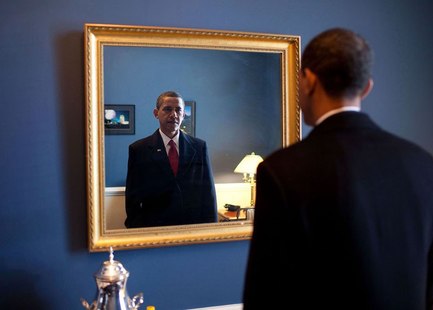|
Image: Pete Souza “My favorite photograph is the one I will take tomorrow.” –Pete Souza, Chief Official White House photographer As President Barack Obama's time in office winds down, I want to reflect on a crucial piece of marketing the president has employed: photography. Pete Souza, the official White House photographer, has played a tremendous role in shaping the way in which Obama is perceived. Souza was named one of Washington's most-powerful, least-famous people by The New Republic, and Chris Cillizza of The Washington Post referred to him as “Obama’s secret weapon.” Souza travels with the president, documenting his various day-to-day activities for historical record. The photographer and his staff produce as many as 20,000 pictures each week, and nearly 2 million images will have been taken by the end of the president’s second term. Thousands of these photos are posted to the White House’s Flickr account, and more than 50 of the most memorable images can be seen in a recent article on the site Twisted Sifter. Like many, I’ve been captivated by Souza’s images. Some have even become my all-time favorites, and I consider them on par with the work of other photographers I appreciate, including Ansel Adams, Richard Avedon, Alfred Eisenstaedt, Annie Leibovitz, and Weegee. I looked at several of Souza’s photos for this post, and I found they mostly fall into three categories, listed below. 1. Obama, The President: These have a serious tone. We see him meeting with staff members, engaging in quiet reflection, making speeches, etc. 2. Obama, The Family Man: We see him engaged in tender moments with his wife and children. He’s embracing the first lady, chatting with one of his daughters on a swing, etc. 3. Obama, The Person: A variety of lighter moments are presented. Obama is seen laughing and enjoying himself either during work or in his downtime. He’s engaged in sports, joking with staffers, etc.
Collectively, these photos humanize the president and make him more relatable. We see a complete profile of the person, his life, and his work. The images have not only shaped Obama’s image while in office, but are now part of his legacy and a permanent piece of American history.
Might I suggest the future president, whoever he or she may be, persuade Souza to stay on after Obama leaves office? I'd like to see how he'd go about documenting the next person to occupy the Oval Office.
0 Comments
Do you talk on the phone with your friends and family? I don’t. Nowadays, much of my personal communication is through text messaging.
Why don’t I like calling? It’s neither here nor there – immediate, yet distant. I prefer that communication either be in writing or in person. So, I’d rather have little idea of the context in which someone in saying something – thus the popularity of smiley face emoticons like :) – or be able to pick up on someone’s body language. I’ve often heard two-thirds of communication is non-verbal, and so you obviously can’t read physical cues unless you can see the other person.
I was curious how many minutes I talk on my cell phone, so I looked at my account online. From early July through early August – my billing cycle – I spoke a total of 201 minutes and I sent 138 text messages. The previous month (June to July), I spoke 286 minutes and sent 163 messages. What does this suggest? Well, I can tell you one thing: all of those messages would have been minutes in years past. no wha im sayin?
I’ve always enjoyed writing media releases. What most interests me about releases is the fact that it's a hybrid piece of communication that draws from both marketing and journalism – both types of writing that I specialize in. Releases pull from journalism in that they are fact-based and contain some of the same elements in a news story, including a headline and opening summary paragraph. They are marketing pieces, however, in that they are not objective like a piece of journalistic writing. Releases are written in a positive, promotional tone about whatever it is you're trying to draw attention.
I'm going to use that piece as a guide to explain my process for writing and sending releases. Please note: - Release Length: the synagogue release is a page and a half and you want to limit yours to no more than two pages. Having worked in newsrooms, I know they are often busy places and editors and reporters only require the most essential information initially. A staffer will follow up if he/she needs additional details. - Opening Paragraph: as you would with a typical news story, summarize the event and include journalism's classic “5 Ws” in the opening paragraph – who, what, when, where, why. In this case, that would be: the Isaac Agree Downtown Synagogue (who), Holocaust program (what), Wednesday, August 24 at 5:30 p.m. (when), where (the synagogue), why (background on the program). This may be all the information a publication will be able to print if they're pressed for space, so it’s important the vital details are included early on.
- Media Distribution: determining where to send the release depends on what you happen to be promoting. In this instance, I wanted to garner exposure for a program that was to be held only one time at a shul in the City of Detroit, and the subject matter was of a historic nature. I, therefore, opted to send it to more mainstream Detroit-based publications, including The Detroit News, the Detroit Free Press, and Daily Detroit. Also, I sent it to Jewish publications in Southeast Michigan, including the Detroit Jewish News and My Jewish Detroit. - Publication Contacts: before sending a release, make sure you’re getting it to the right person. Go to the publication’s website and/or print edition and see if a reporter or editor has covered similar stories in the past. Some publications have a religion writer, but that's a narrow category and a staffer who would write about a synagogue event is more likely to fall under something news related, such as a local editor or a community reporter. Those are the folks to whom I passed along the release.
In addition, include the release in the body of the email. Editors/reporters have different ways of working – some prefer to cut and paste a release from the copy of the email, others would rather download the document. Some media outlets have online security where an attachment might be removed, so including the release in the body of the message will help ensure your information still makes it to the recipient.
On a final note, keep in the mind that the relationship between the media and the public is reciprocal. You shouldn't feel as though you are imposing on staffers – they need the content just as you need the publicity. In our 24-hour news cycle, I think of media outlets, be they online, print or broadcast, as fires that constantly need to be feed. If you’ve approached the media in the past and have not received exposure, then it’s possible that you may need to change your approach. I’m confident you'll be more successful if you follow my method for writing and distributing releases. Good luck! |
AuthorI'm Eli Natinsky and I'm a communication specialist. This blog explores my work and professional interests. I also delve into other topics, including media, marketing, pop culture, and technology. Archives
July 2024
Categories |






 RSS Feed
RSS Feed